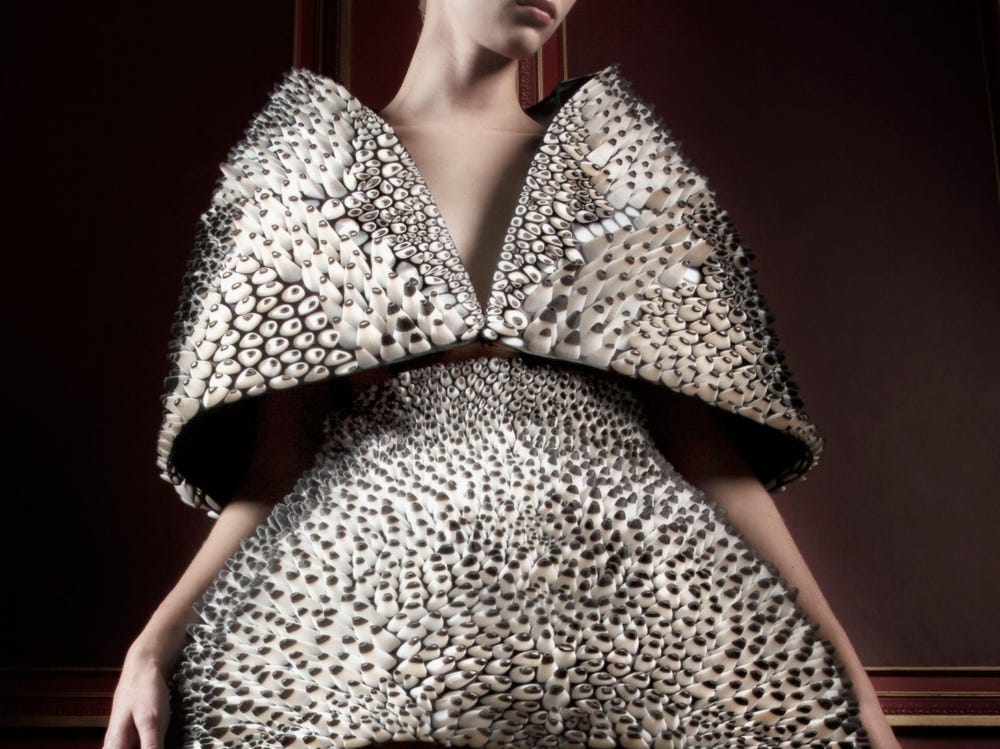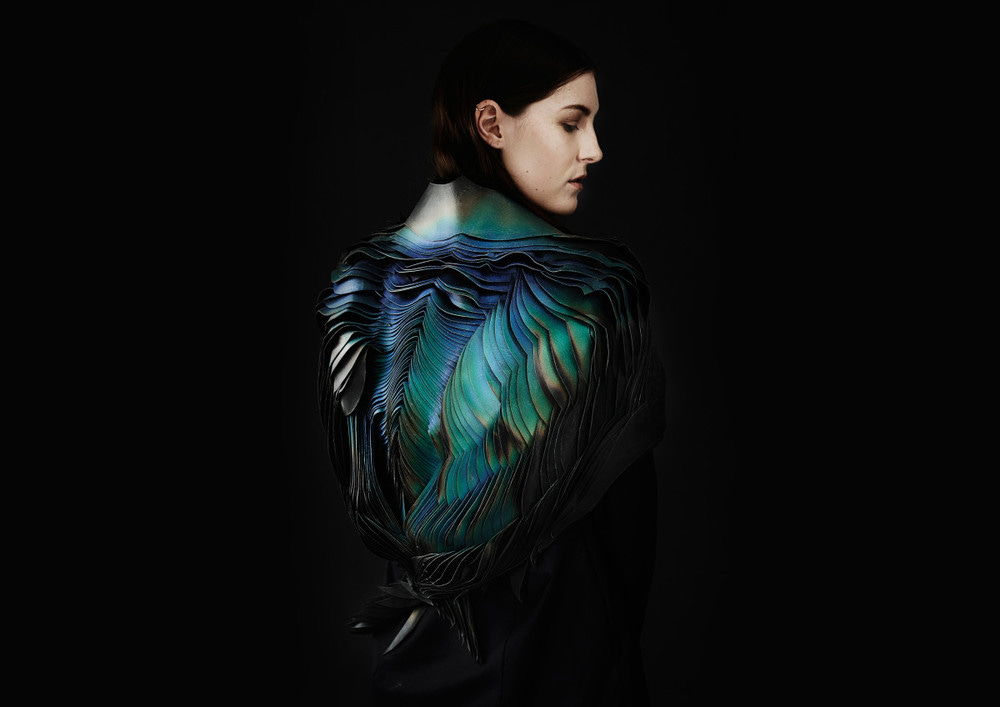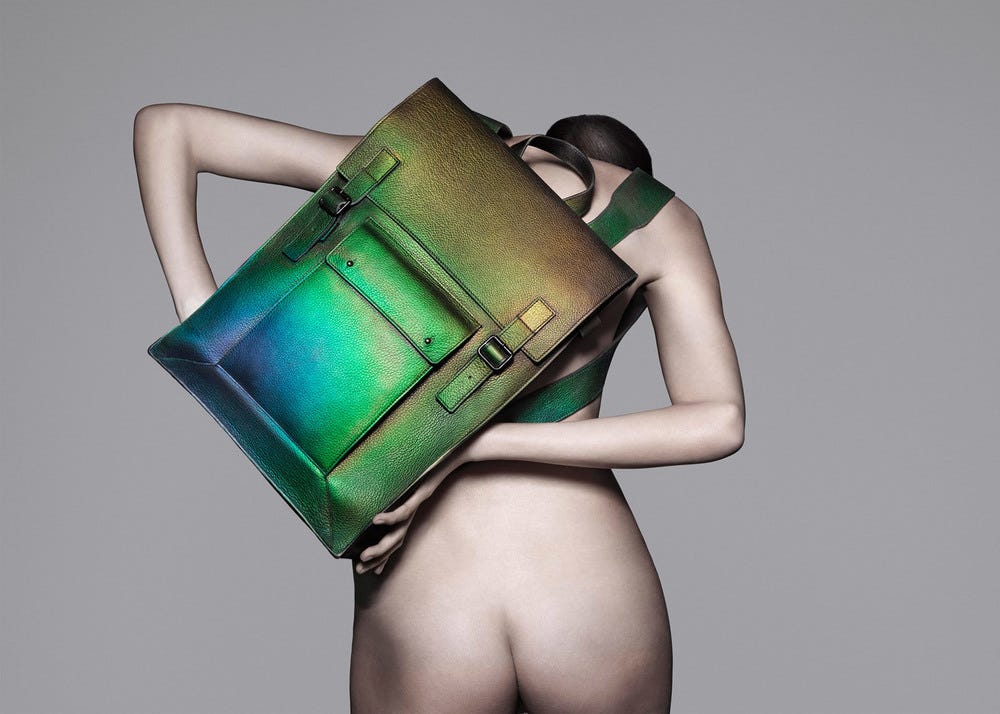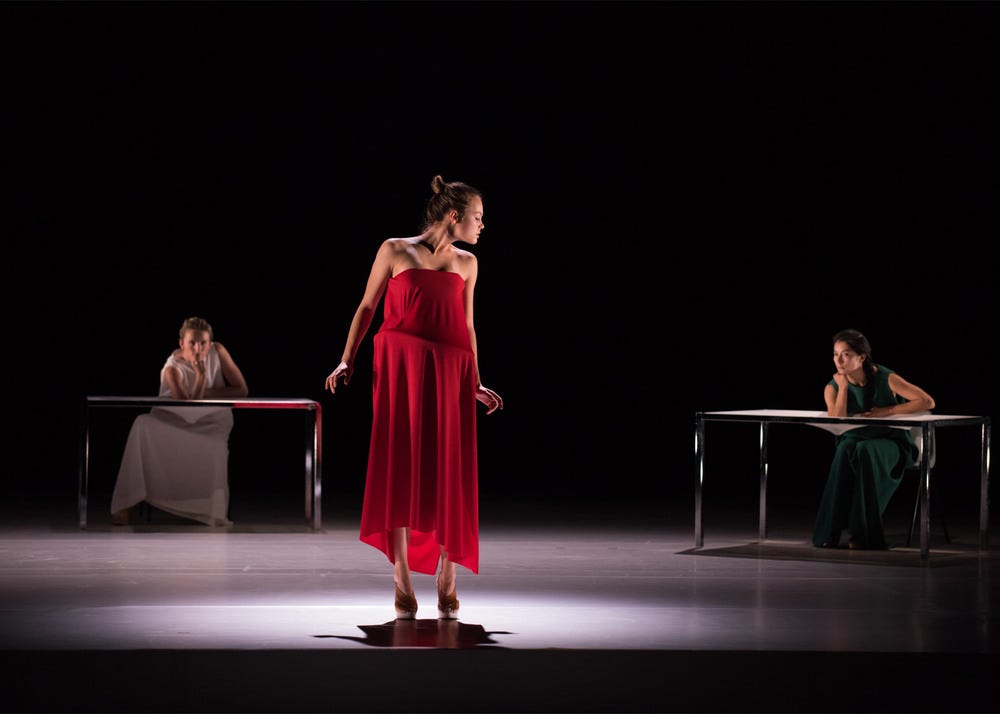Francesca Rosella: "Our Garments will be our Second Skin"
Fashion and technology are having a moment, and it’s not just us noticing. Museums, those vaults of history and society, are clearly paying attention to the impact of technology on fashion: Late last fall, the Metropolitan Museum of Art in New York announced the theme for this year’s MET Gala and exhibition will me "Manus X Machina: Fashion in an Age of Technology." Around the same time, the High Museum of Atlanta launched its exhibit on Dutch Designer Iris Van Herpen. And two weeks ago, the museum of Fine Arts in Boston opened its doors to #TextStyle, an exhibit exploring the relationship between digital and design when it comes to fashion. Museums provide a curated look at culture, and it's clear there's enough happening at the intersection of fashion and technology to warrant whole exhibits. More than that, it’s clear that what’s happening right now with 3d printing and digital fabrication is marking a moment where everything’s changing. On today’s show, Amanda Cosco speaks with Michelle Finamore, the Penny Vinick Curator of Fashion Arts for the Musuem of Fine Arts in Boston. Finamore tells us more about #TextStyle and speaks to some of the challenges curating a contemporary fashion exhibit where the garments literally come to life and interact with attendees. Then stay tuned: later on the show we catch up with Francesca Rosella of wearable couture company CuteCircuit to learn about CuteCircuit's special commission for the the MFA Boston. In addition to creating one-offs and concept pieces, CuteCircuit has actually successfully brought a number of products to market, including clutches, dress, and even now t-shirits. Rosella shares her thoughts on fashion tech—in the museum, on the runway, and in the streets.
Garments Mentioned:
Iris Van Herpen's Anthazoa Dress

The centrepiece of the exhibition (and the signature image for the show) is Dutch designer Iris Van Herpen’s Anthazoa Dress, a 3D printed collaboration with architect Neri Oxman. The dress, which debuted at Paris Fashion Week in the Spring of 2013, was produced using Stratasys’ unique Objet Connex multi-material 3D printing technology, which allows for a variety of material properties to be printed at once. “This dress captures not only a moment in fashion history, but also this amazing collaborative effort that’s happening right now between the fashion and the tech worlds” says senior curator Michelle Finamore.
The Unseen


Lauren Bowker, designer The Unseen has developed multi-sensory chromic colour-change inks that react to different environmental conditions.
Gravity Fatigue
Fashion designer Hussein Chalayan is known for creating experimental works that stretch the boundaries of the imagination. Chalayan designed an entire dance production, called Gravity Fatigue, in which costumes were king. The clothes didn't simply dress the dancers, but "dictated the grammar of the choreography itself." The work contained 110 pieces, ranging from floating veils to highly structured geometric garments. Pictured below, a dress that contains motors and mechanics to move with a mind all its own.

Ying Gao
Canadian-born designer Ying Gao’s “Incertitudes” is a set of sound-reactive cocktail dresses made of sewing pins and electronic components. Both dresses are activated by a speaker’s voice, which brings motion to the pins, giving the dress a sense of presence.
CuteCircuit MFA Dress:
The MFA Boston also commissioned a special version of the wearable couture company CuteCircuit’s Twitter dress. The dress, which was originally created for the mobile network operator EE to mark the launch of the company’s 4G network, was iterated on specifically for the museum. The CuteCircuit MFA Dress is a flapper-inspired evening gown made CuteCircuit’s signature magic fabric and Swarovski crystals on rose gold and silver-plated chains.
A photo posted by Electric_Runway (@electric_runway) on Mar 5, 2016 at 7:44pm PST


